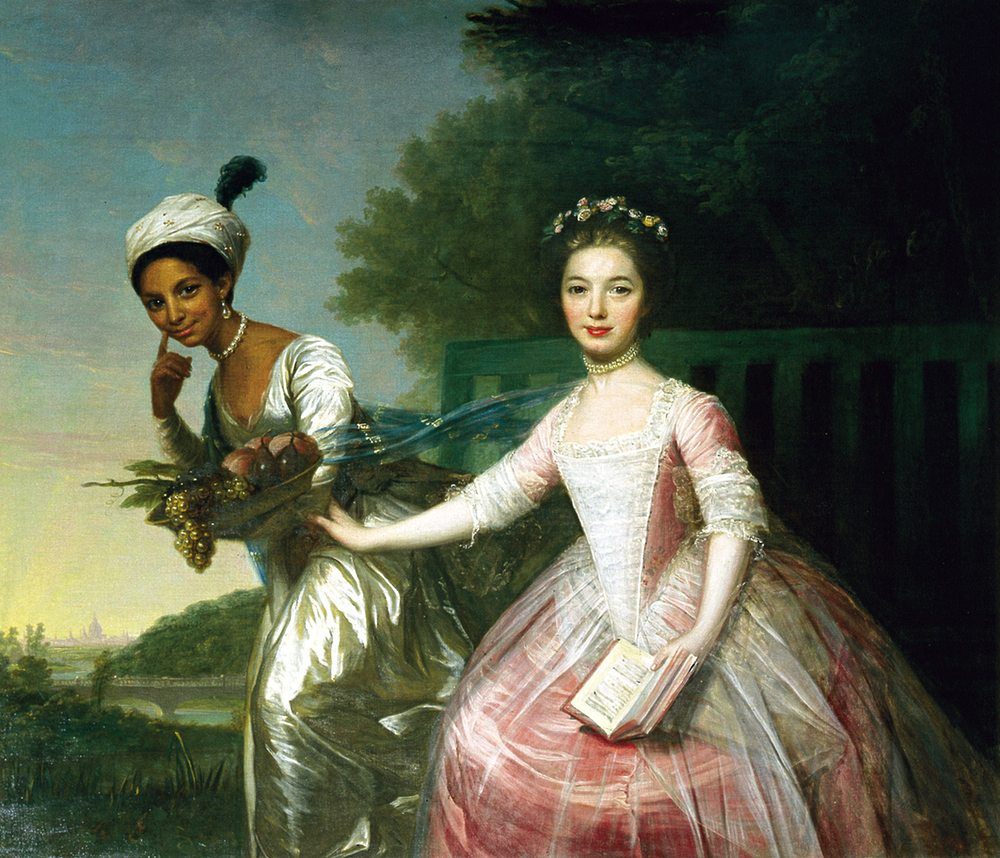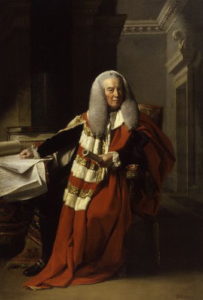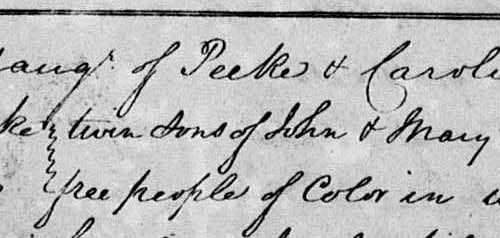When William Murray travelled from Scotland to Westminster on a highland pony at age fourteen, never to return to the country of his birth, it may have seemed obvious that he would go on to live a rather interesting and, in many respects, unconventional life. Born to on March 2nd 1705 to David Murray, 5th Viscount Stormont and his wife Margery, Murray was one of fourteen children. He went to Perth Grammar School in Scotland and then, on the advice of his brother, James, applied to Westminster School; he was admitted in May 1718 and in 1719 became a King’s Scholar. He excelled at the school and before leaving was elected Captain of the Scholars. There is plenty of evidence to suggest that he valued his time at Westminster – he may have been the first in his line of Murrays to attend the school, but he was certainly far from the last, and on his death in 1793, he was buried in Westminster Abbey after having expressed a wish to be buried there on account of “the love I bear to the place of my early education”.

Upon leaving the school, Murray matriculated at Christ Church, Oxford in 1723, earning a BA in 1727 and an MA in 1730. For a brief time he considered, albeit reluctantly, pursuing a career in the church due to the costs involved in studying law. However, it is believed that the generous patronage of Thomas Foley, father of one of Murray’s contemporaries and friends at both Westminster and Christ Church, allowed Murray to enter his preferred profession. While at the University he won a prize for a composition of Latin verse to mark the death of King George I, earning himself the animosity of Old Etonian and Oxford contemporary William Pitt, who would feature as his opponent again when they both sat in the House of Commons.
Called to the bar November 1730, Murray began his law career as junior counsel in several Scottish appeals in 1733 and 1734. In 1737 he was highly praised for his role as counsel in the case of the lynching of Captain John Porteous, who had ordered the city guard to fire into an unruly crowd at an execution but had been pardoned by Queen Caroline, acting as regent for George II. A bill was proposed to punish the City of Edinburgh for its failure to prevent the lynching, however only a nominal punishment was handed down, in part due to Murray’s work. He had a growing chancery practise by 1738 and in 1742 was made solicitor-general.
With a promising career well underway, Murray was gaining the attention of powerful opponents and in 1753 was accused, along with fellow Old Westminsters Andrew Stone and James Johnson, of having toasted the Old Pretender, James Edward Stuart, twenty years earlier. The matter was officially investigated by the cabinet and although Murray’s speech in his defence laid the matter to rest, he was privately infuriated by the proceedings. Regardless of his personal feelings, it did little to hinder his professional progress and he was promoted to the position of attorney-general in 1754 and then was sworn in as Chief Justice of the Court of the King’s Bench and created Lord Mansfield in November 1756.
One of the most contentious cases Murray passed judgement on was that of Somerset v Stewart in 1772. James Somerset, an enslaved African man, had been brought to England in 1769 by Charles Stewart, who has purchased him in Boston, USA. In 1771, Somerset escaped, only to be recaptured November of that year and imprisoned on a ship bound for Jamaica, where Stewart had ordered he be sold to a plantation owner. Advocates for Somerset approached the Court of the King’s Bench seeking a writ of habeas corpus, or a court order to retrieve Somerset and bring him before the court so his imprisonment could be judged for its legality. Somerset was brought before the Court of the King’s Bench and a case was began that attracted heavy press and public attention.
Somerset’s advocates argued that slavery itself was unlawful as it was not recognised in either English common law, nor in any parliamentary statutory law. Stewart’s lawyers argued that property was paramount, and stressed the danger they believed would come of freeing all of the enslaved black people in England, who at the time numbered approximately 15,000. Murray’s verdict ultimately favoured Somerset, and his decision spoke to not only the case itself but the moral question of slavery. Although he deliberately avoided suggesting outright abolition, the sentiment is nevertheless clear in the statement of his judgement:
‘The state of slavery . . . is so odious that nothing can be suffered to support it, but positive law. Whatever inconvenience, therefore, may follow this decision I cannot say this case is allowed or approved by the law of England; and, therefore, the black must be discharged.’
Somerset was consequently freed but the exact precedent set is still debated. It certainly prohibited the forced removal of enslaved people from England but the judgement was reported in different ways so it is difficult to determine its exact condemnation of the wider issue of slavery. It was widely misunderstood by the British public to suggest that no man, on English soil, was a slave, but did not end the holding of enslaved people in England, nor did it halt British participation in the Slave Trade.
Murray would also go on to pass judgement in the case of the Zong Massacre of 1781. The Zong was a slave ship transporting 442 enslaved people to Jamaica. According to the accounts of the crew, due to navigation miscalculations they faced the issue of running out of water, as they supposedly had enough for 4 days with Jamaica still 10-13 days away. The enslaved people on board had been insured as cargo. Under the terms of the insurance any enslaved person to die of natural causes, such as dehydration due to a lack of water, would not be reimbursed but the principal of ‘general average’ meant that a captain who jettisoned part of their cargo in order to save the rest could claim the loss from his insurers. 142 enslaved people were thrown from the ship before it reached Jamaica, at which point there were still 420 gallons of water on board. Despite an affidavit made by the first mate that claimed subsequent rainfall had allowed them to save and store the water, it has since been argued that disease and malnutrition was rampant on the ship and the £30 that would be awarded for each enslaved person murdered at sea would be worth more than their sale in Jamaica. When the insurers refused to pay compensation to the owners of the ship, they were taken to court. As presiding judge, Murray noted that the ship has sailed past multiple ports where it could have procured water, and that further enslaved people were thrown overboard after the reported rainfall had bolstered water supplies. The insurers were found not to be liable for losses.
Part of the controversy of these cases was due to the existence of a young mixed-race girl named Dido Elizabeth Belle who was, at the time of the ruling, a ward of William Murray. Murray had married Lady Elizabeth Finch, daughter of another Old Westminster, Daniel Finch, seventh earl of Winchilsea and second earl of Nottingham. Their marriage was long and, according to all surviving sources, happy, but childless. This likely contributed to the decision to take in Murray’s great-niece Elizabeth Murray after the death of her mother in 1766, and very soon after to also take in another great-niece, Dido Elizabeth Belle, seemingly to be her playmate and later companion.

Belle was the illegitimate daughter of Sir John Lindsay with Maria Belle, a black enslaved woman who Lindsay supposedly took prisoner from a Spanish Vessel in the West Indies, although this claim has been disputed. Belle was born in England, likely in June 1761, and little is known of the first few years of her life. She was baptised in November 1766 in Bloomsbury at the parish church of Murray’s London home, suggesting that she was brought into the Murray household around this time. If Belle had been living with her mother before this, the situation of their parting is not recorded. Maria Belle was freed by Lindsay by 1774 and features in records up until 1781 but subsequently disappears.
Belle’s status at the Mansfield home is still not fully understood. A visiting American loyalist by the name of Thomas Hutchinson dined at Kenwood, where the family then lived, in 1779 and wrote in detail about Belle, above any other member of the family:
‘A Black came in after dinner and sat with the ladies and after coffee, walked with the company in the gardens, one of the young ladies having her arm within the other. She had a very high cap and her wool was much frizzled in her neck, but not enough to answer the large curls now in fashion. She is neither handsome nor genteel — pert enough. I knew her history before, but My Lord mentioned it again. Sir John Lindsay having taken her mother prisoner in a Spanish vessel, brought her to England where she was delivered of this girl, of which she was then with child, and which was taken care of by Lord M., and has been educated by his family. He calls her Dido, which I suppose is all the name she has. He knows he has been reproached for showing fondness for her —I dare say not criminal.’[1]
Hutchinson’s focus on Belle and his less than flattering comments suggest he was not entirely comfortable with her presence, but his account provides some interesting insights into her position in the household. She does not dine with the family, but joins the women later seemingly as an equal. Her education is mentioned, as is Murray’s fondness for the girl and the existing opposition to this. Household account books kept by Elizabeth Murray’s older sister Anne reveal that Belle had a total yearly allowance of £30, including presents for Christmas and her birthday. Contrastingly, Elizabeth’s allowance was £100, before any totalling of additional gifts. While she and Belle were raised as close companions, her higher status was undeniable and this difference in funds makes this clear. Dido was by no means neglected, however – the £30 she received was more than three times the wages of a kitchen maid and there is further evidence in the account books that Belle was provided for – she had two teeth extracted in 1789 at a cost of 5 shillings each and was given asses milk as medicine at a cost of £3 4s. 2d. There are also records of her bed being washed and ‘glazed’, an indicator that it was hung with glazed chintz fabric, and of a table being bought for her. She was certainly not left wanting and the fondness Murray had for Belle that Hutchinson comments on is evident.

The enduring image of Dido Elizabeth Belle is a portrait once attributed to Johann Zoffany, showing her in the grounds of Kenwood with Elizabeth Murray. Much commentary has been published attempting to read status from the painting, particularly focused on the style of dress each woman wears. Belle’s ensemble is rather different from the ‘high cap’ Hutchinson remarks on and considering his rather unbecoming description of her, it would likely have provoked comment if she had turned up to dinner wearing an extravagant gown and a turban decorated with an ostrich feather. Those analysing the painting have claimed Elizabeth Murray’s dress both to be of more recent fashion and of more outdated fashion than Belle’s, but it remains that Belle’s clothing is too hidden to properly discern the style. While it has been stated that Belle carries a platter of fruit and could thus be on her way to serve somebody, her clothes and jewellery do not suggest the rank of a servant. In the 2013 film Belle, based on Belle’s life, the titular character proclaims herself ‘too high to dine with the servants and too low to sit with guests’, as assessment that, despite the historical inaccuracies of the film, seems to summarise her status well.

Lady Elizabeth Murray would go on to marry her cousin, Old Westminster George Finch-Hatton in 1785[2], leaving Belle to stay on at Kenwood. Her father died in 1788 and it is still debated whether he left Belle anything in his will. It indicated that £1,000 is to be left to John and Elizabeth Lindsay, two illegitimate children, however it isn’t made clear the identity of this ‘Elizabeth Lindsay’. As Elizabeth was Belle’s middle name it has been suggested that the money was intended to go to her, but more recently the existence of a third illegitimate child has been proposed. If this is the case, Belle received nothing from her father. William Murray left her an annuity of £100 and a sum of £500 and Lady Margery Murray, another , left her an additional £100.[3] Murray’s will of 1782 also carefully states her freedom – it is still unclear whether this is simply a reaffirmation to ensure her ongoing status, or if this is the moment at which she is officially freed, although from the aforementioned treatment she received at Kenwood she certainly was not raised as an enslaved worker, regardless of her legal status. Belle would go on to marry a steward named John Davinier in 1793 and have three sons, Charles, John and William Thomas. She died in 1804.
Despite having no direct impact on the legal landscape of Britain, Belle is ‘widely believed to have influenced some of the most crucial legal judgements of the Georgian era’.[4] Hutchinson, with yet more thinly veiled contempt, remarks on her influence in the Somerset v Stewart case thusly:
‘A few years ago there was a cause before his Lordship bro’t by a Black for recovery of his liberty. A Jamaica planter being asked what judgement his Ldship would give? “No doubt” he answered “He will be set free, for Lord Mansfield keeps a Black in his house which governs him and the whole family.”’

It seems to be common knowledge that Belle lived in Murray’s household and whether her presence informs or was encouraged by Murray’s anti-slavery stance, public sentiment was such that she had influence over his decisions as Chief Justice of the Court of the King’s Bench. When Somerset’s case was heard it is unlikely that the then nine-year-old was actively seeking to influence her guardian, but seeing the young Belle playing with Lady Elizabeth certainly didn’t do any harm to William Murray’s support of the abolition of the Slave Trade, and the legal decisions he made with this view in mind.
[1] https://sharonlathanauthor.com/wp-content/uploads/Dido-Elizabeth-Belle_-a-black-girl-at-Kenwood.pdf
[2] http://collections.westminster.org.uk/index.php/finch-hatton-george-1747-1823
[3] https://www.oxforddnb.com/view/10.1093/ref:odnb/9780198614128.001.0001/odnb-9780198614128-e-73352#odnb-9780198614128-e-73352
[4] https://theconversation.com/belle-is-fascinating-just-dont-compare-it-to-12-years-a-slave-28174




